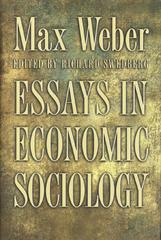Below is the question
In 2056, there are two mining firms operating on the moon, extracting Helium 3. Once both firms have entered the market, they compete a la Cournot. The market inverse demand function is given by P(Q) = 8 - Q. For items 1-2 below, assume that both firms have the total cost functions C(q) = 2 + 2q. For the other items, firm one still has the same cost structure, but see instructions for firm two. 1. Suppose both firms enter the market at the same time. Find the equilibrium price and total output. Are profits positive - that is, was the entry decision correct? 2. Suppose firm 1 enters the market first and firm two follows, as in the Stackelberg model from lecture. Find the equilibrium price and output of each firm. Are the two firms better off or worse off compared to in part 1? Are profits positive? 'Use the link provided in the class' moodle site to submit this problem set. Econ 101 Spring 2021 - UCLA For the following items, we will modify the game. Firm 2 now has a Research & Devel- opment department capable of reducing marginal costs-but at a cost. Total research and installation costs, given a choice of c2 E [0, 3], are f(c2) = 6 -2c2. So, given a choice of c2, total costs are C2(q) = f(c2) + c2q = 6 - 2c2 + c29. That is, firm 2 can set up a plant with marginal cost c2 = 3 paying no fixed cost. Alternatively, if it wants to set up a plant with marginal cost 1, the fixed cost would be 4.Firm 1 still has the same technology, with total cost C1(q) = 2 + 2q. The game has three stages. In the first, firm 1 enters and chooses the quantity q1. In stage 2, firm two enters, deciding its marginal cost c2. At the last stage, firm 2 chooses its quantity produced and "the market" determines the price given the quantities produced by both firms. The "big picture" question is, what is the subgame perfect Nash equilibrium of this game? We will proceed step by step. 3. Solve the subgame at stage 3. That is: taking as given q, and c2, what is the profit-maximizing quantity q2(91, C2)? Hint: what is best response function in the Cournot model? 4. Given the previous answer, what is the profit anticipated by firm 2 at the second stage: that is, 72(91, q2(q1, C2), c2)? Write that as a function of q1 and c2 only. Hint: remember to include the fixed cost! 5. What is the profit-maximizing marginal cost choice c2(q1 )? 6. Given your last answer, what does firm 1 expect the quantity chosen by firm 2 to be, given its own choice of quantity? That is, what is the 92(91) anticipated in the first stage? 7. What is the equilibrium quantity chosen by firm 1? 8. What are the equilibrium price, quantities, and profits in the market








